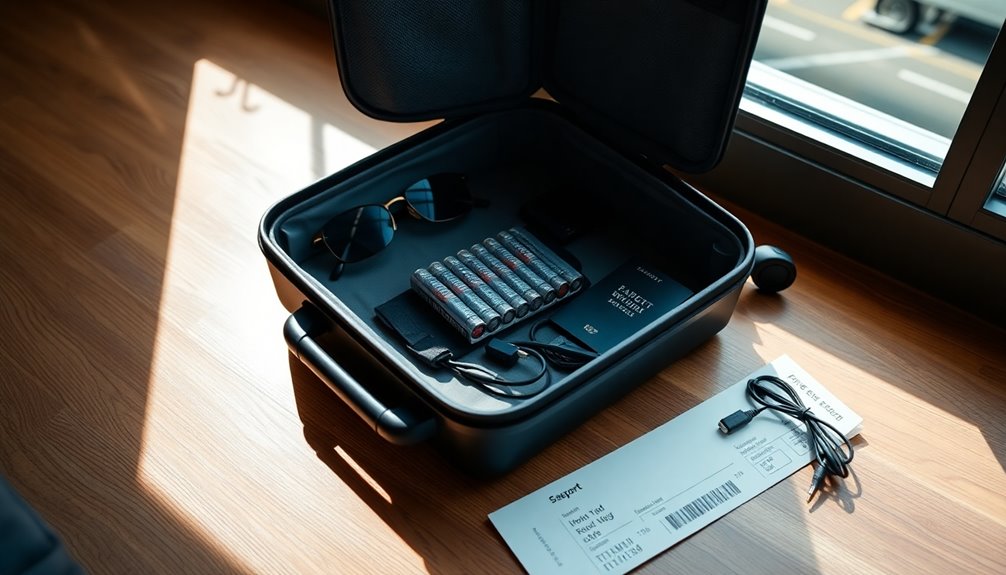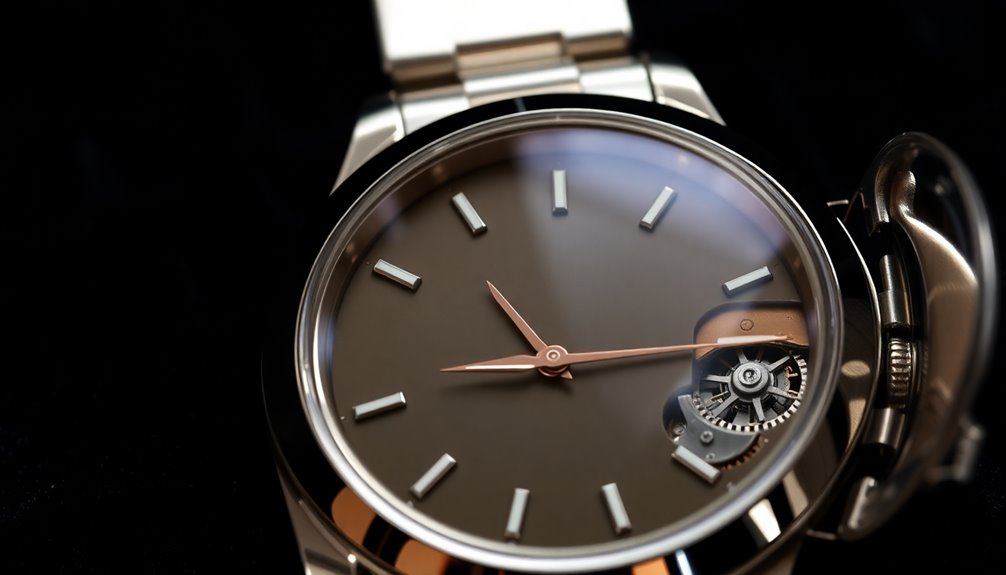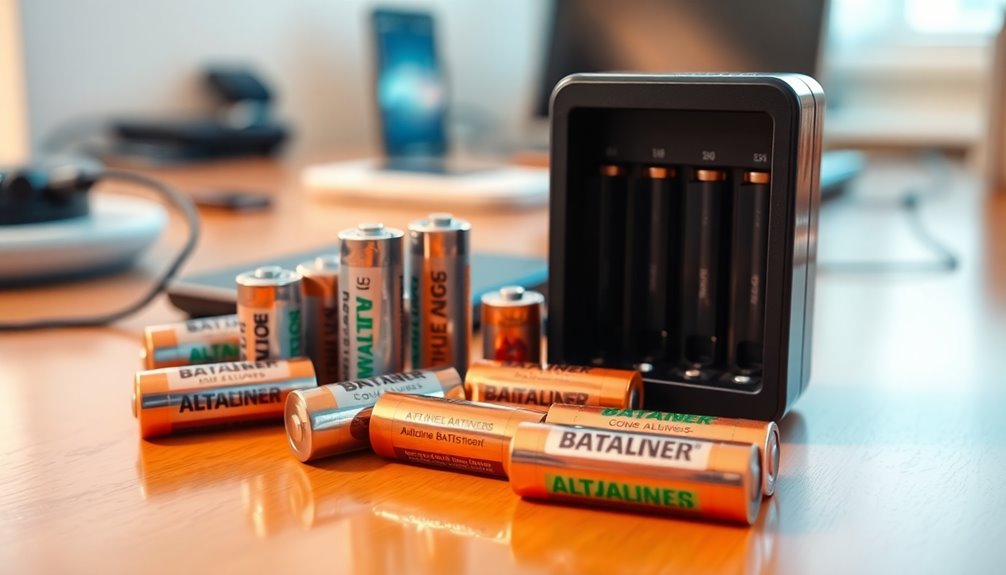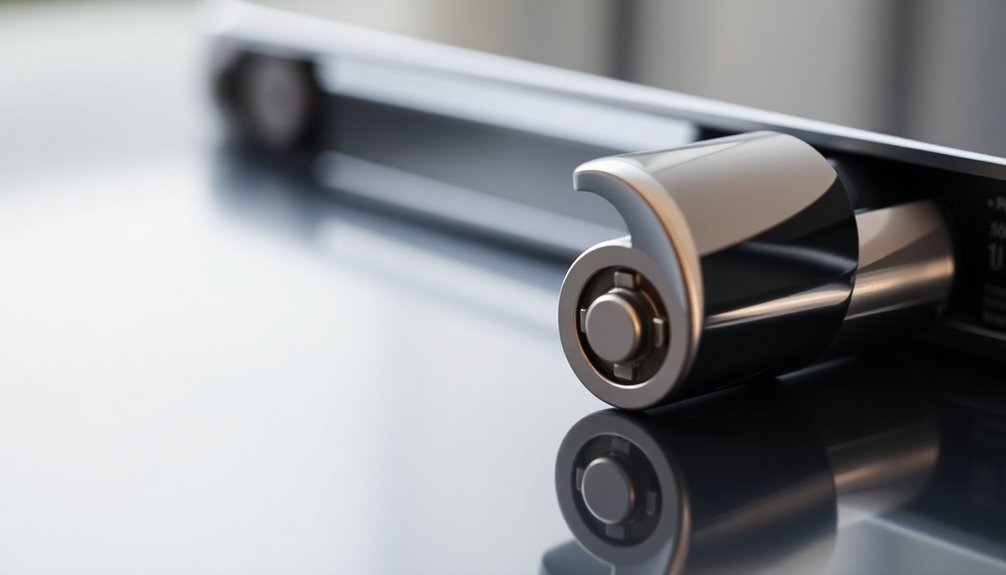You can take AA batteries on a plane, but you need to follow specific rules. Carry spare AA batteries in your carry-on luggage, where up to four are allowed. It's safer to keep them there to avoid short circuits. Make sure loose batteries are stored in their original packaging or their terminals are taped to prevent accidental activation. Generally, batteries in checked baggage are discouraged. Always check your airline's specific guidelines beforehand, as these can vary. If you're curious about more tips and important details, keep going to gain more insights on traveling with batteries!
Key Takeaways
- Spare AA batteries are permitted in carry-on luggage, with a maximum of four allowed per passenger.
- It is safer to carry AA batteries in your carry-on rather than checked baggage to prevent hazards.
- Always keep loose batteries insulated and store them in original packaging or protective cases to avoid activation.
- Notify your airline 14 days in advance if traveling with battery-powered mobility aids to ensure compliance.
- Verify specific airline regulations regarding battery transport before flying, as rules may differ between carriers.
Understanding Battery Regulations
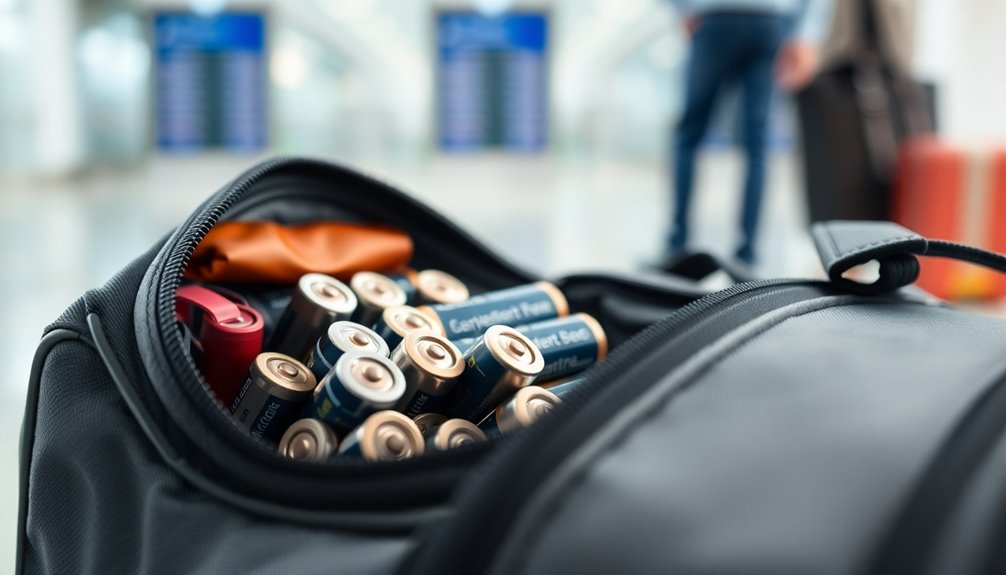
When you're preparing for a flight, understanding battery regulations is essential, especially for AA batteries.
You can take spare AA batteries in your carry-on baggage, but be sure to check your airline's guidelines for any specific restrictions. The regulations allow a maximum of four spare AA batteries, so keep this in mind as you pack.
It's important to store these batteries in their original packaging or insulated to prevent accidental activation. If you have loose batteries, make sure their terminals are taped to avoid short circuits, which can create safety hazards.
Carry-On vs. Checked Baggage
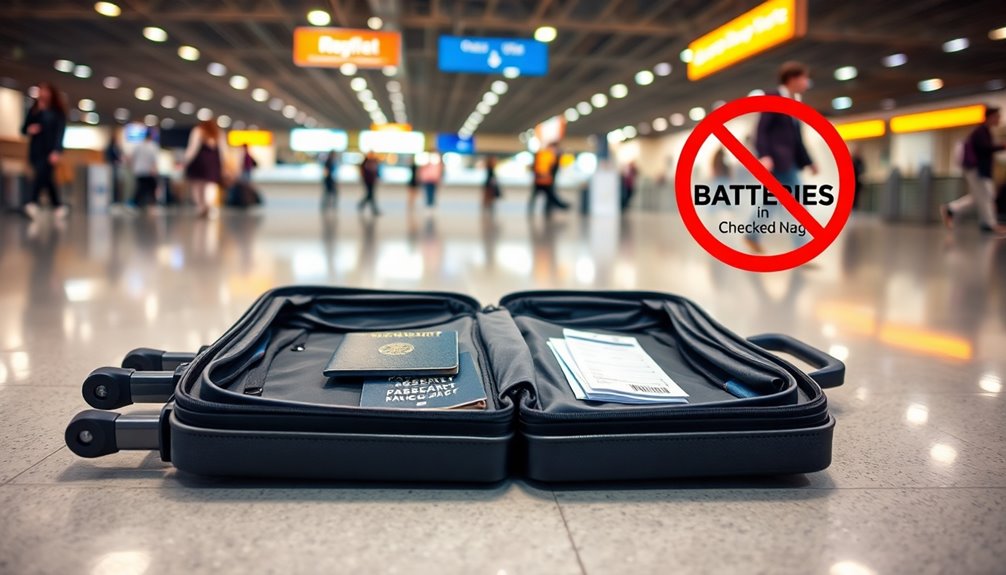
When packing for your flight, consider where to store your AA batteries.
It's generally safer to keep them in your carry-on to avoid issues like short circuits or temperature changes.
Plus, knowing the specific airline policies on battery limits can help guarantee a smooth journey.
Carry-On Requirements
AA batteries are a common travel accessory, but knowing how to carry them properly is essential. You can bring AA batteries in your carry-on bag, keeping them easily accessible during your flight.
However, it's important to remember that you shouldn't pack them in checked baggage due to the risk of short circuits and fire hazards. When carrying spare batteries, store them in their original packaging or insulate them to prevent accidental activation.
Keep in mind that airlines may have specific limits on the number of batteries you can carry, so always check your airline's guidelines.
Finally, make sure to inform security personnel about any batteries in your carry-on to help facilitate the screening process.
Checked Baggage Restrictions
Travelers should be aware of the restrictions regarding AA batteries in checked baggage. While you can pack them in both carry-on and checked baggage, it's safer to carry them on to avoid short circuits. When placing AA batteries in checked baggage, make certain they're insulated and protected.
Here's a quick overview:
| Type of Battery | Restrictions |
|---|---|
| AA Batteries | Allowed in checked baggage |
| Lithium Batteries | Must adhere to watt-hour limits |
| Spare Batteries | Check airline limits before flying |
| Protection | Store in original packaging |
| Best Practice | Use protective cases for spares |
Remember to check with your airline for specific rules regarding spare batteries in checked baggage.
Battery Safety Guidelines
Understanding battery safety is essential for a hassle-free flying experience. When it comes to AA batteries, the battery safety guidelines recommend that you keep them in your carry-on bags. Airlines typically allow them, but check specific rules before traveling.
To prevent short circuits, spare AA batteries should remain in their original packaging or be insulated. Storing them in checked bags is generally discouraged due to fire risks. The Transportation Security Administration (TSA) advises transporting all batteries, including AA, in your carry-on for safety. Additionally, it's important to remember that over 1.8 billion payment card records were compromised in 2020, highlighting the need for vigilance in protecting personal items while traveling.
Don't forget to inform security personnel about your batteries during the screening process to guarantee a smooth passage through checkpoints. Following these guidelines will help you avoid unnecessary complications while flying.
Packing Tips for Batteries
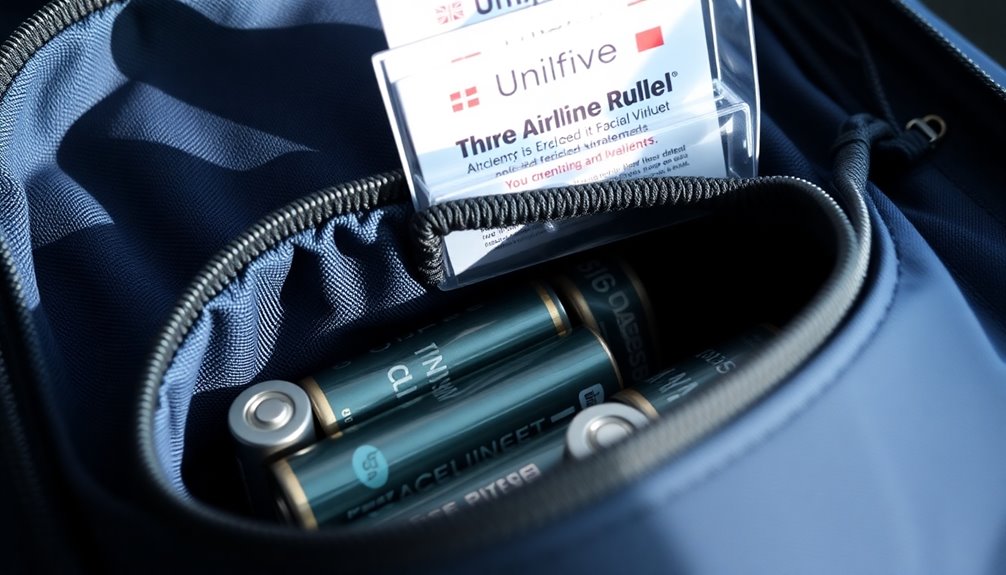
When packing AA batteries for your flight, make sure to store them properly to avoid any mishaps.
Use their original packaging or tape the terminals to prevent accidental activation, and always check your airline's guidelines to stay compliant.
Proper Battery Storage
To guarantee your AA batteries are safely transported, always keep them in their original packaging. This helps prevent short circuits that could occur during your journey.
Here are some additional tips for proper battery storage:
- Tape the terminals of loose AA batteries to avoid contact with metal objects.
- Use protective cases to further shield your batteries from potential hazards.
- Pack your batteries in your carry-on luggage, not checked baggage, for safety compliance.
Remember to verify that all battery-powered devices with AA batteries are turned off and stored securely in your carry-on.
Following these practices will help you travel smoothly while keeping your batteries safe and functional!
Airline Guidelines Compliance
While packing for your flight, it's important to stay informed about airline guidelines regarding AA batteries. You can bring AA batteries in your carry-on luggage, but check your airline's specific rules for any extra restrictions.
To prevent short circuits, always keep spare batteries in their original packaging or tape over the terminals before packing. It's vital to pack batteries in carry-on baggage due to safety concerns linked to checked luggage.
Typically, you can have up to four spare batteries for standard AA types, so be mindful of this limit. Finally, be sure to inform security personnel about the presence of lithium batteries during the screening process to guarantee a smoother clearance.
Types of Batteries Allowed

Although you can generally take AA batteries on a plane, it's essential to understand the specific types of batteries allowed.
Here's a quick rundown:
- Devices: Most devices using standard AA batteries are permitted.
- Metal Batteries: Non-rechargeable lithium batteries over 2 grams are typically banned in carry-on luggage.
- Spare Batteries: You're allowed to bring up to four spare lithium-ion batteries under 100 watt-hours in your carry-on.
Keep in mind that the Transportation Security Administration (TSA) recommends storing batteries to avoid short circuits—this means using original packaging or protective cases.
Always check with your airline for any additional restrictions to guarantee a smooth travel experience with your batteries.
Airline-Specific Guidelines
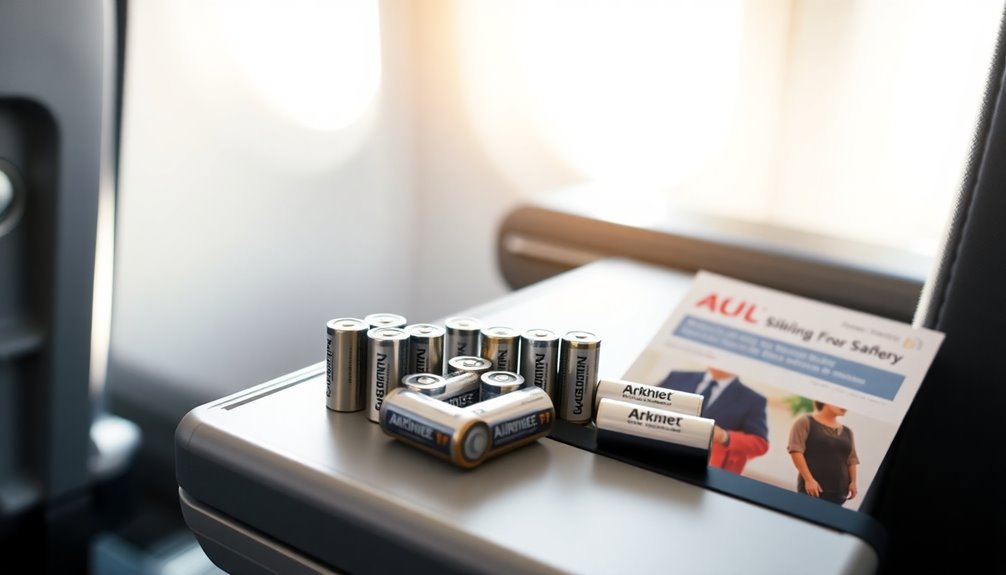
When planning to travel, it's important to check your airline's specific guidelines regarding AA batteries, as policies can vary greatly. Most airlines allow AA batteries in carry-on luggage, but they're generally not allowed in checked bags due to safety concerns about hazardous materials. Remember to keep batteries insulated to prevent short circuits, ideally in their original packaging.
| Airline | Carry-On Policy |
|---|---|
| Airline A | Allowed; limits may apply |
| Airline B | Allowed; check device status |
| Airline C | Not allowed in checked baggage |
If you're traveling with electronic devices containing AA batteries, make sure they're turned off and comply with your airline's rules. Always verify restrictions before flying!
Common Myths Debunked
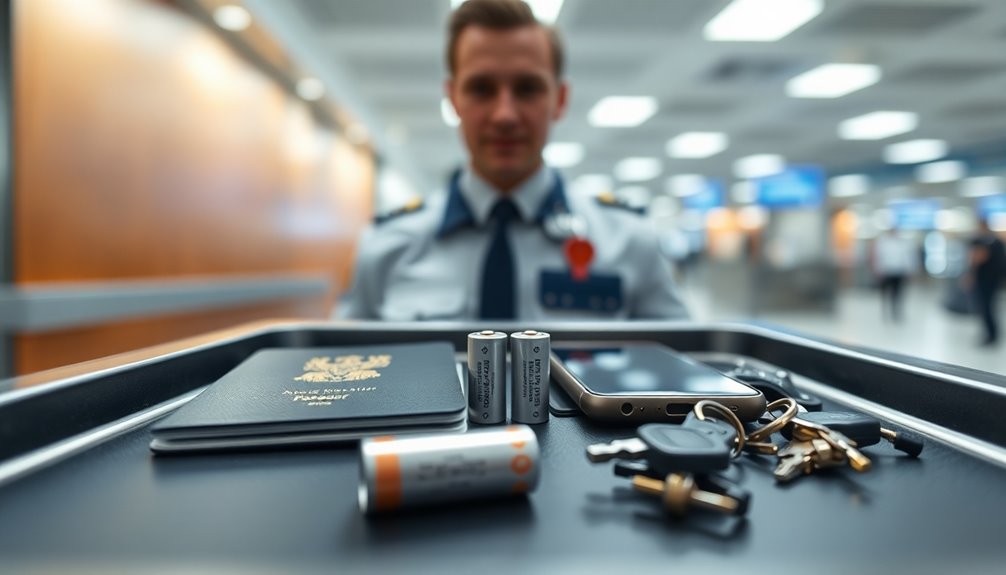
What do you really know about taking AA batteries on a plane? There are some common myths that might lead you astray. Here are a few to clarify:
- Batteries must be kept in separate plastic bags: It's true that they should be stored safely, but keeping them in their original packaging is often sufficient.
- All batteries can be checked in luggage: Spare AA batteries must be in your carry-on to avoid fire hazards.
- Loose batteries can be stored freely: They should be kept in their original packaging or with taped terminals to prevent accidental activation.
Understanding these points can help you navigate airline rules and travel with confidence. Don't let misconceptions hinder your journey!
Special Considerations for Mobility Aids
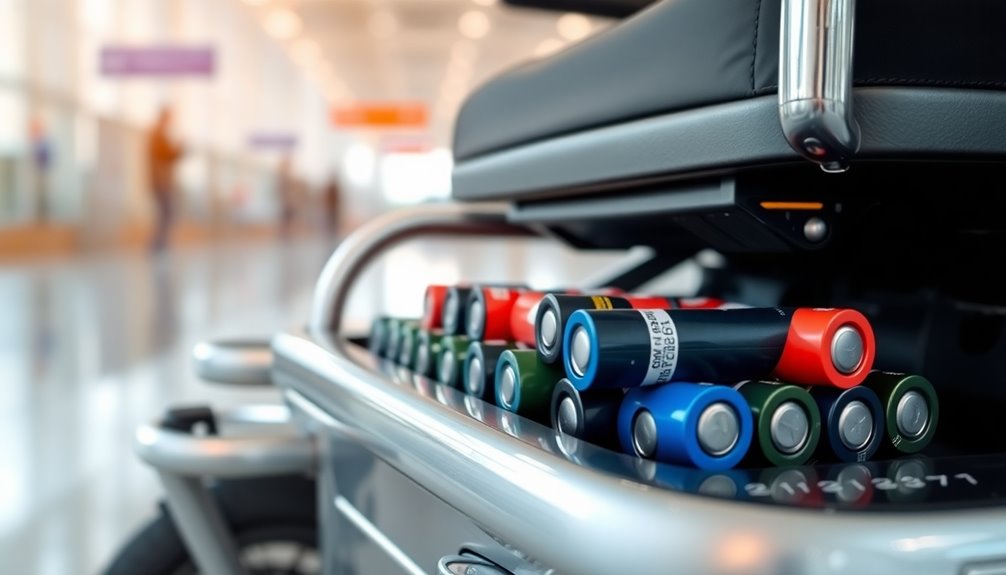
If you're traveling with a battery-powered mobility aid, it's essential to prepare in advance to guarantee a smooth journey.
You'll need to notify the airline at least 14 days prior to your flight, providing details about your mobility aid's model and battery specifications. This information helps the airline verify compliance with safety regulations.
If your lithium-ion batteries don't meet approval criteria, you might need to submit a portable vehicle flight form. Remember, only batteries that comply with IATA regulations can be transported, so check size and watt-hour limits.
Typically, you'll receive authorization for your battery-powered devices within 7 business days after submitting the required details.
Plan ahead, and you'll have a hassle-free travel experience!
Resources for Travelers
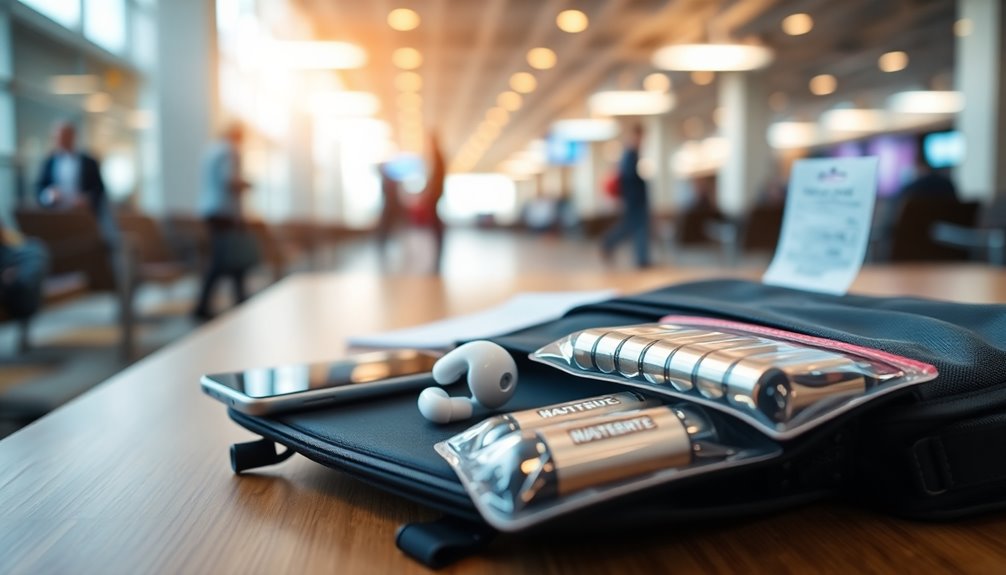
Traveling with batteries requires some preparation, and it's wise to stay informed about the latest guidelines.
Before you fly, check your airline's specific rules regarding AA batteries. Here are some helpful tips to keep in mind:
- Keep spare AA batteries in their original packaging or tape the battery terminals to prevent short circuits.
- Limit the number of batteries in your carry-on to avoid exceeding the typical restriction of four spare batteries.
- Always inform security personnel about the batteries in your luggage to speed up the clearance process.
Frequently Asked Questions
Can You Fly With AA Batteries in Carry-On?
Yes, you can fly with AA batteries in your carry-on.
Just make sure to keep them in their original packaging or protected to prevent short circuits.
It's best to avoid packing spare batteries in checked luggage.
If you have loose batteries, consider taping the terminals or using protective cases for added safety.
Always let security personnel know about your batteries to help speed up the screening process.
Safe travels!
How Many AA Batteries Can I Take on a Flight?
You can generally take up to four spare AA batteries on a flight in your carry-on luggage.
Just make sure they're not damaged or modified. It's best to keep them in their original packaging or protective cases to prevent short circuits.
While you can pack them in checked baggage, carrying them in the cabin is safer.
Don't forget to inform security personnel about any spare batteries during screening for a smooth process.
Where to Put AA Batteries When Flying?
When flying, you've got to treat AA batteries like precious gems. Store them in your carry-on baggage to prevent any mishaps.
Make sure they're in their original packaging or insulated to avoid short circuits. If you've got loose batteries, taping the terminals and placing them in a protective case is smart.
Always check your airline's specific guidelines, but generally, you can bring up to four spare AA batteries without issues.
What Types of Batteries Are Not Allowed on Airplanes?
When you're flying, certain batteries aren't allowed.
You can't bring lithium metal batteries over 2 grams due to fire risks. Non-spillable wet batteries above 12 volts and 100 watt-hours also face restrictions.
If a battery's damaged, like having leaks or cracks, it's not permitted in your bags.
Additionally, automotive batteries are a no-go because of their weight and hazards.
Always check specific guidelines to guarantee your batteries are compliant.
Conclusion
So, before you pack those AA batteries, remember: not all airlines play by the same rules. You might think you're ready for takeoff, but one overlooked guideline could ground you. Double-check your airline's specific policies, and keep your batteries in your carry-on. After all, you wouldn't want to discover too late that your essentials are left behind. Stay informed, stay prepared, and guarantee your journey is smooth—because the last thing you want is a battery-related surprise at the gate!

